The style of this super beautiful Gaiwan is Ming, using the underglaze blue technique, and entirely handcrafted and hand painted. The pattern on the lid features a classic design of intertwining lotus branches (known as Chanzhi Lian), while the pattern on the body of Gaiwan showcases the traditional Chinese twin lotus motif. The design of the tall style with an outward-flared mouth extends the curvature of the Gaiwan, making it less likely to scald one’s hand during use. The short style, on the other hand, is delicate and compact, with a thicker body, suitable for tea drinkers with smaller hands.
In ancient China, the twin lotus due to its symbolic meaning is regarded as the gentleman among flowers. It represents the finest specimen among lotus flowers and symbolises a harmonious and everlasting union. The twin lotus, with one stem and two blooms, epitomizes the notion of unity, shared roots, shared blessings, and shared existence. Besides that, in ancient literary works, the twin lotus is acclaimed as a symbol of love, conveying the message of marital harmony, happiness, and representing the tender affection between lovers. It is also associated with deep brotherly love, signifying profound emotional bonds between siblings. In folklore, the appearance of twin lotus is considered an auspicious sign of good fortune.
In addition, the beautiful tin spots on the porcelain add even more unique charm to it. The formation of tin spots is due to the high content of iron elements in local parts of the blue pigment. After reaching saturation in the high-temperature glaze solution and cooling down, the iron elements in the supersaturated part start to precipitate. If the iron content of the blue pigment is higher and the cooling rate is appropriate, tin spots are more likely to appear on the surface of the ware.
In addition to firing and materials, the formation of tin spots also involves the factor of glaze material. During the painting process, tin spots can also be formed due to the accumulation of blue pigment. Tin spots are more likely to appear on the surface of the ware at the intersections and the starting and ending points of brushstrokes. The formation of tin spots can be said to be a natural creation or an artificial decoration. This tin glazes not only add a rustic texture to the Gaiwan but also imbue it with a unique sense of history.
The delicate brushstrokes and intricate detailing of the painting on this Gaiwan create a distinct sense of aesthetic appeal. The soft and elegant shade of underglaze blue, along with a hint of faint tin glaze, gives it a graceful and ethereal beauty under the light. This Gaiwan exudes a simple yet elegant charm, reminiscent of the style of imitation Ming, making it truly captivating and irresistible.





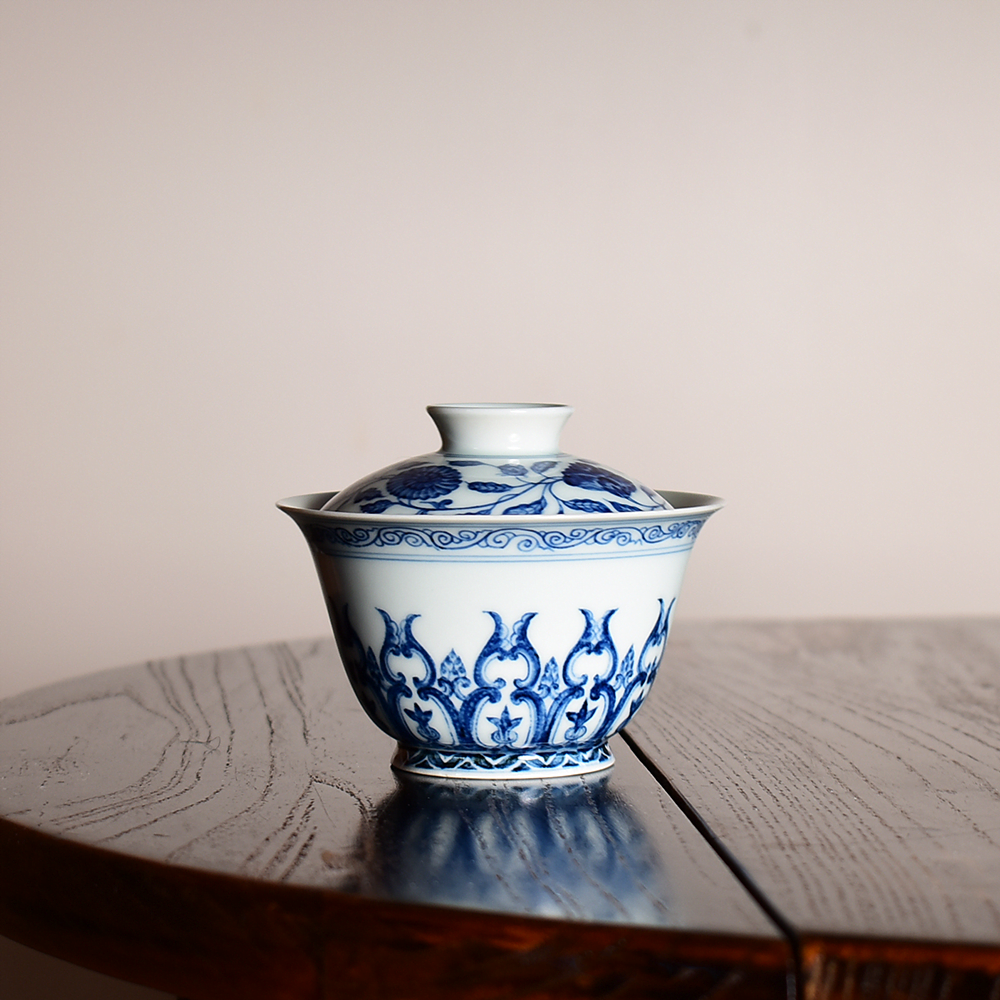
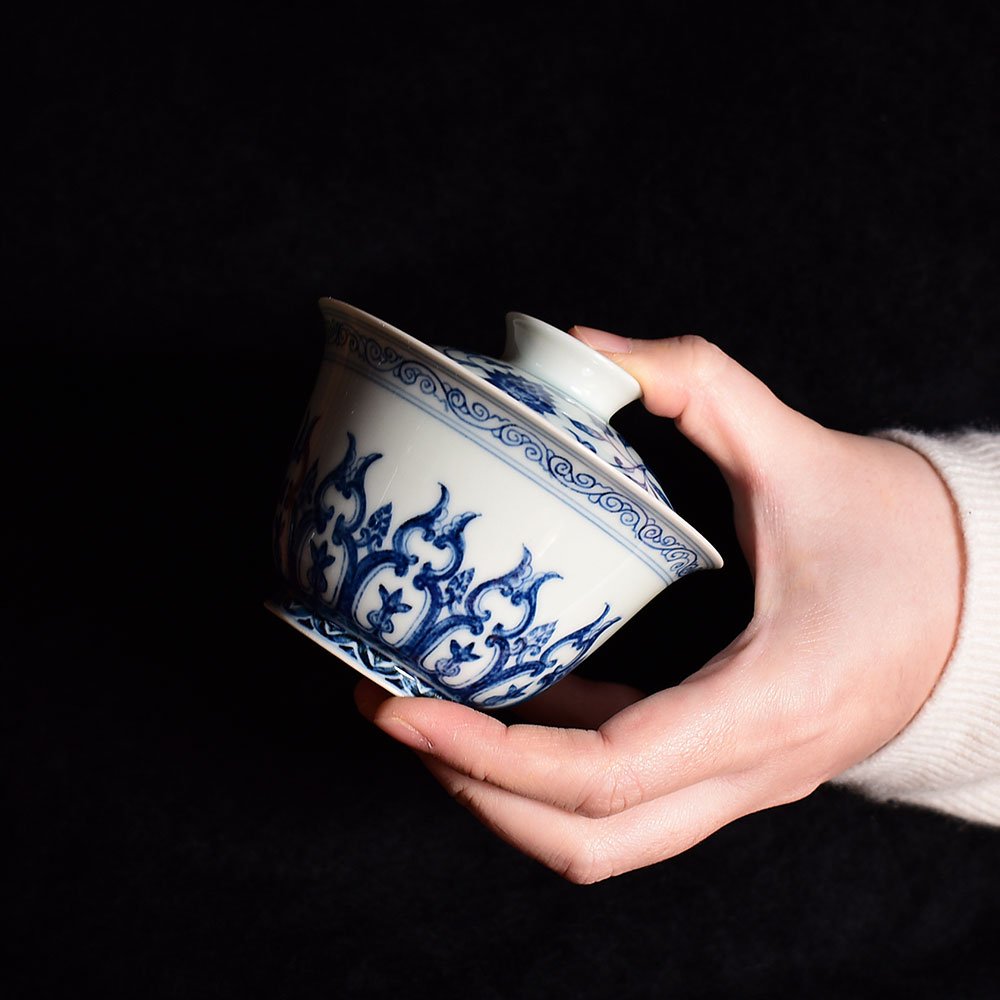
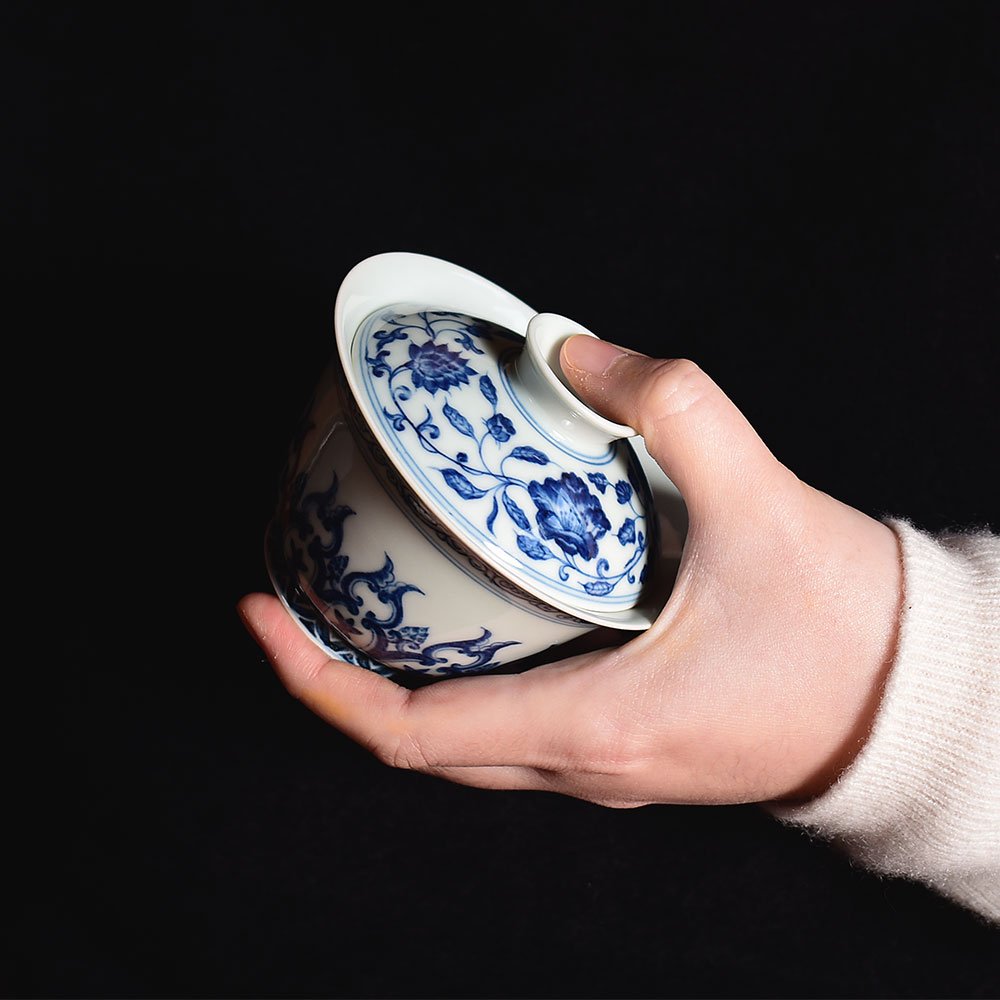
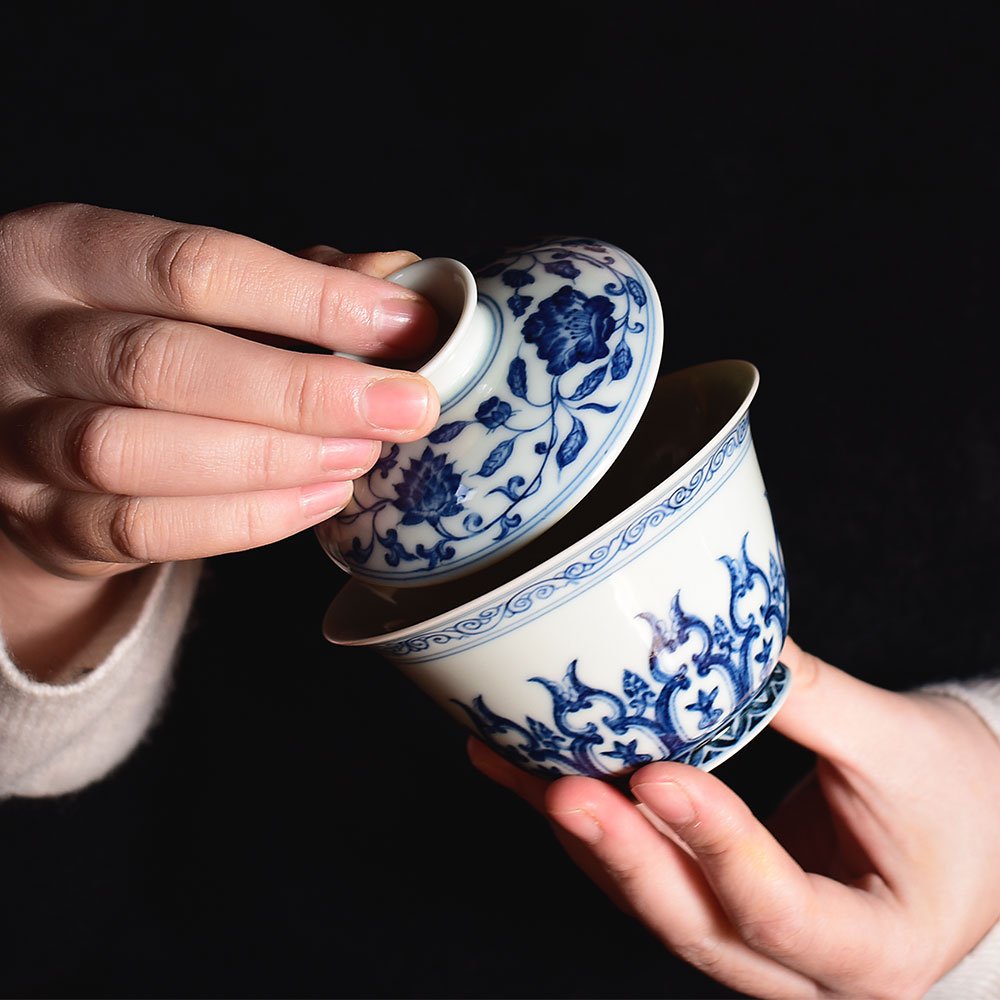
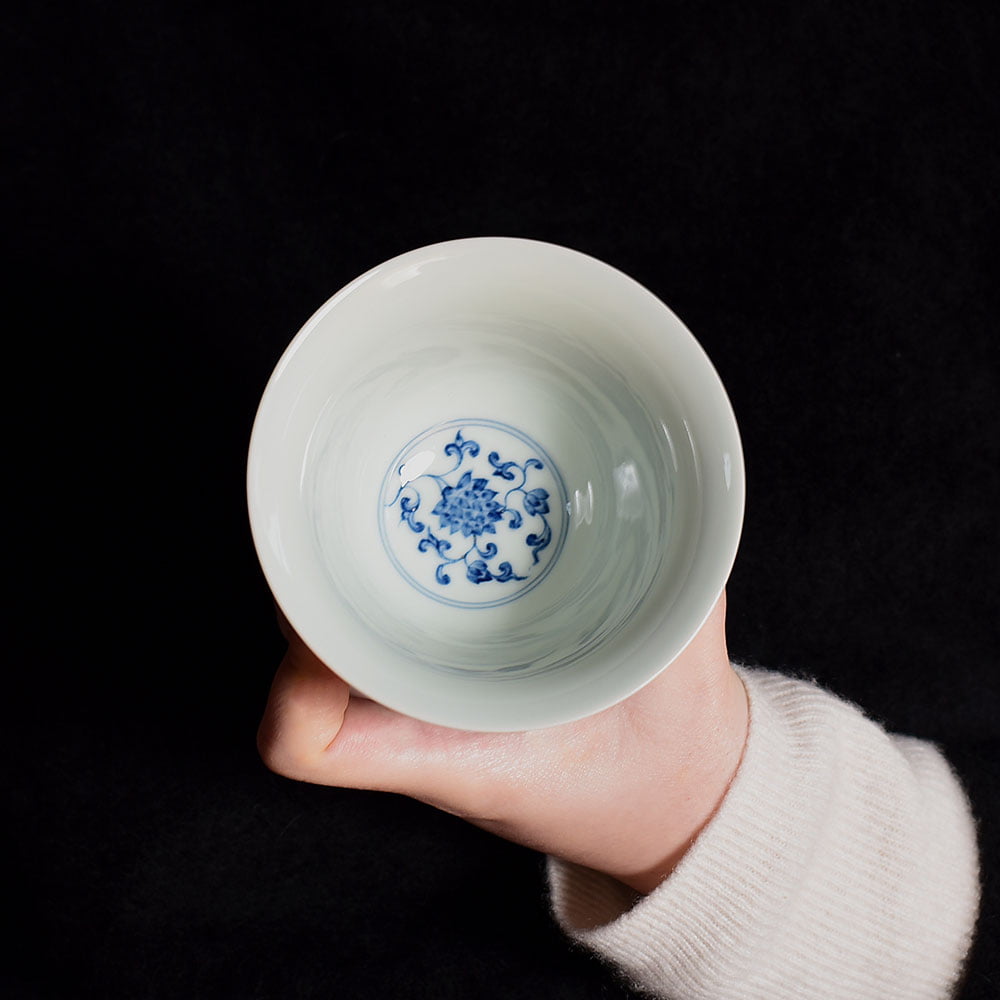
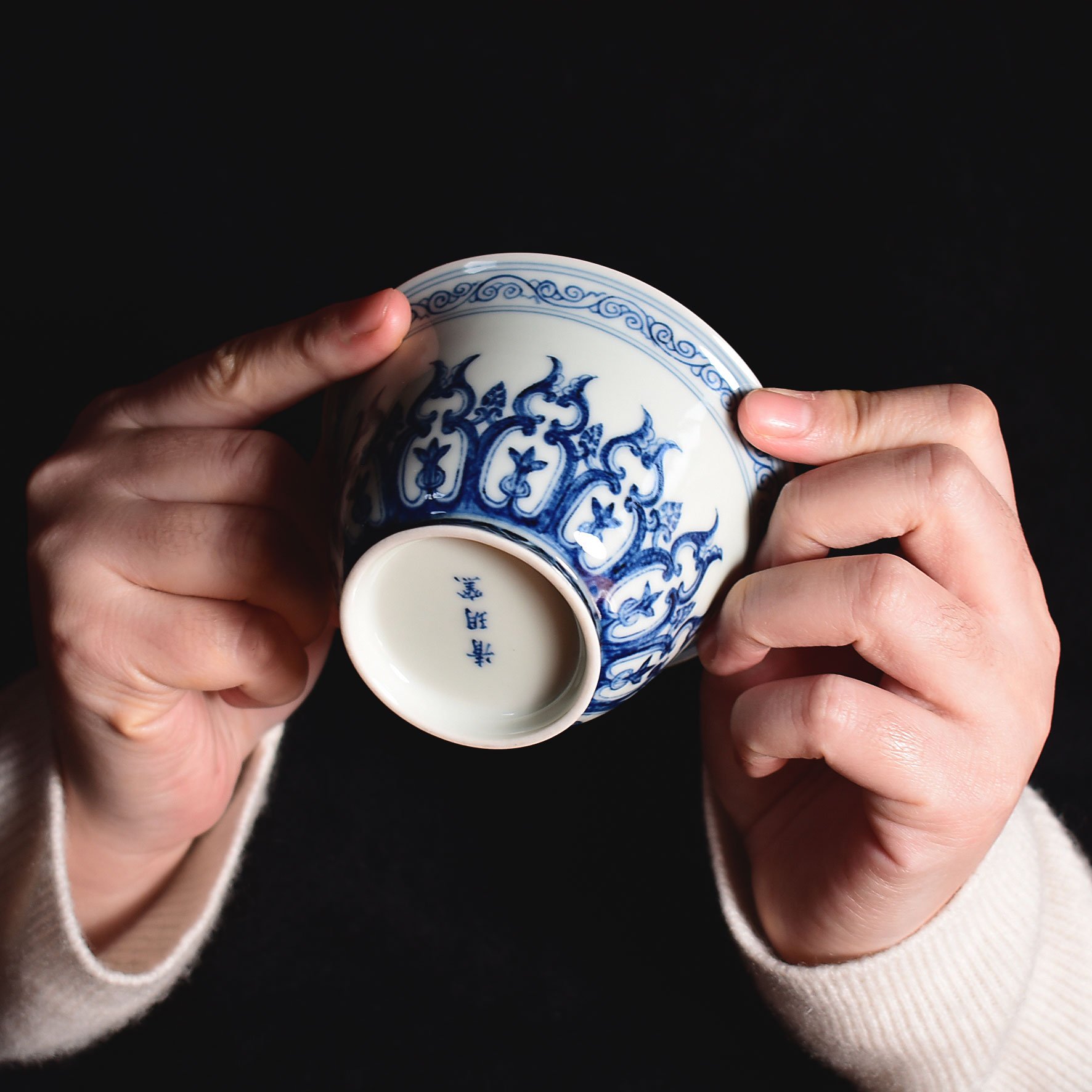
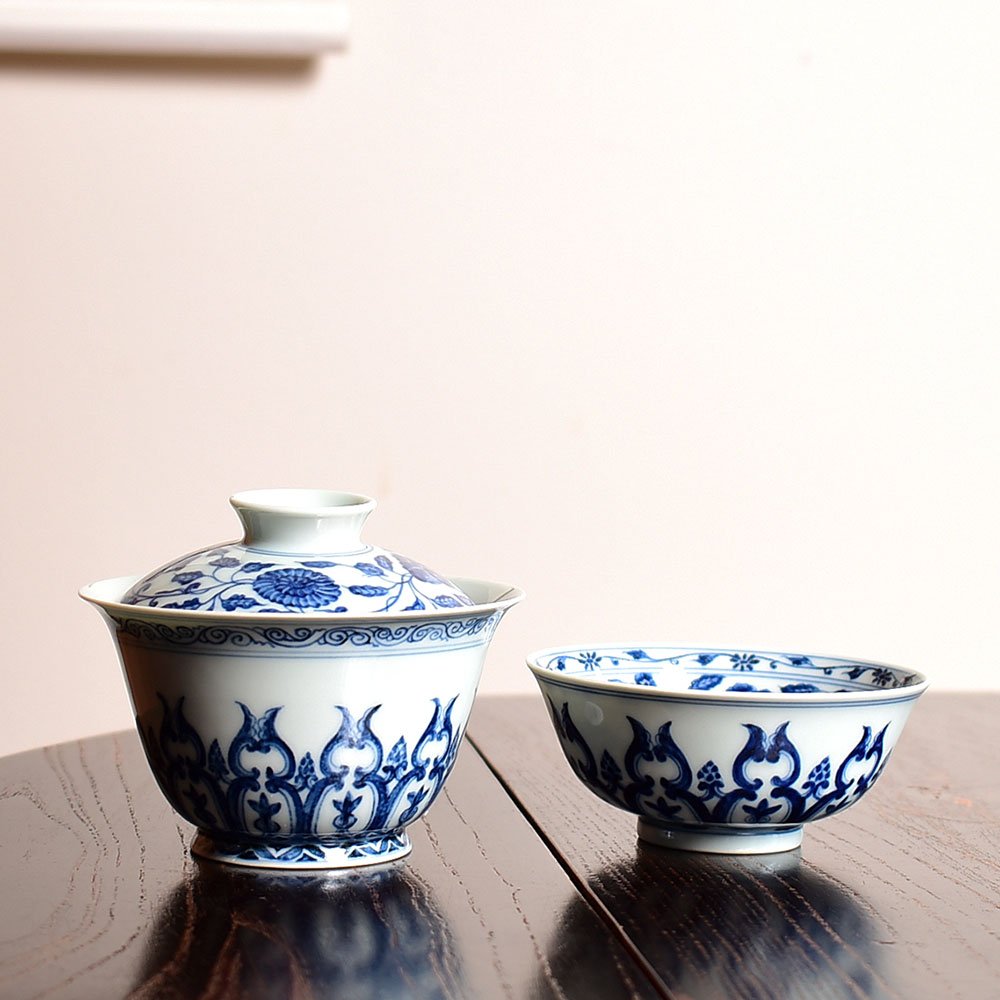
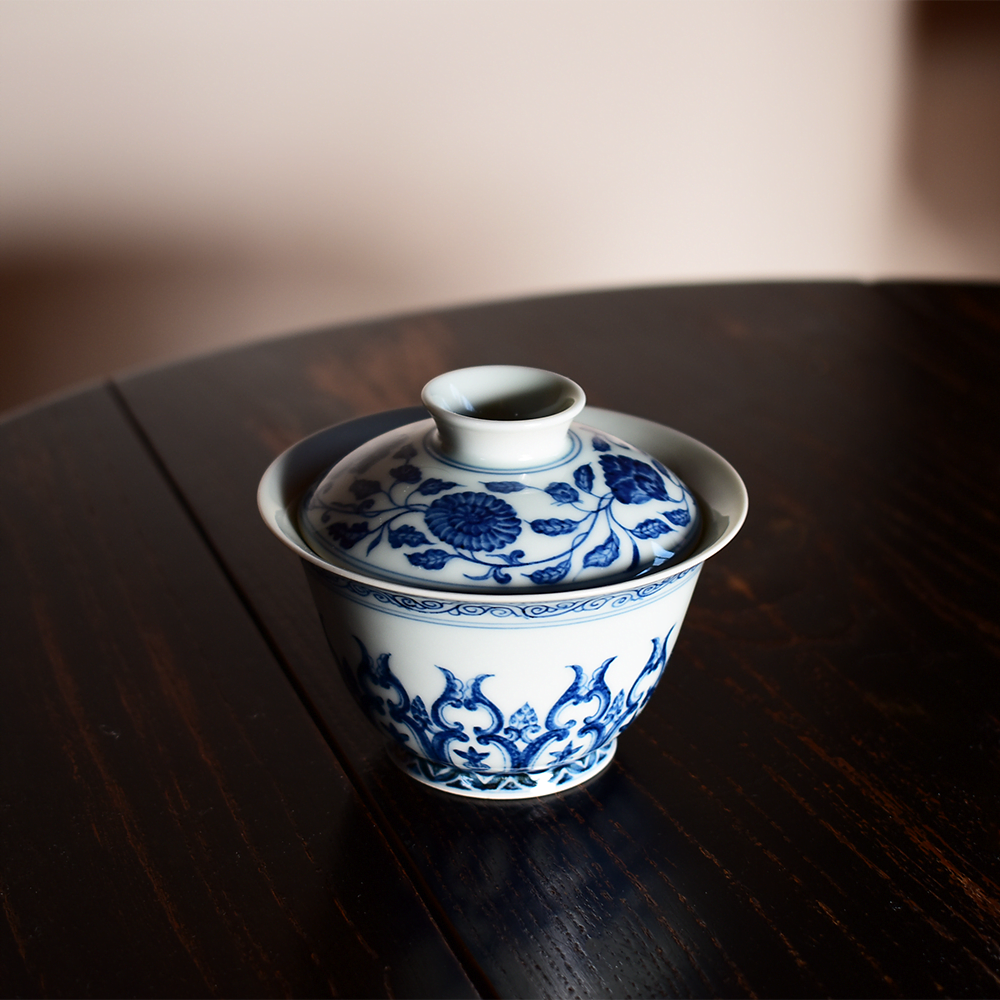
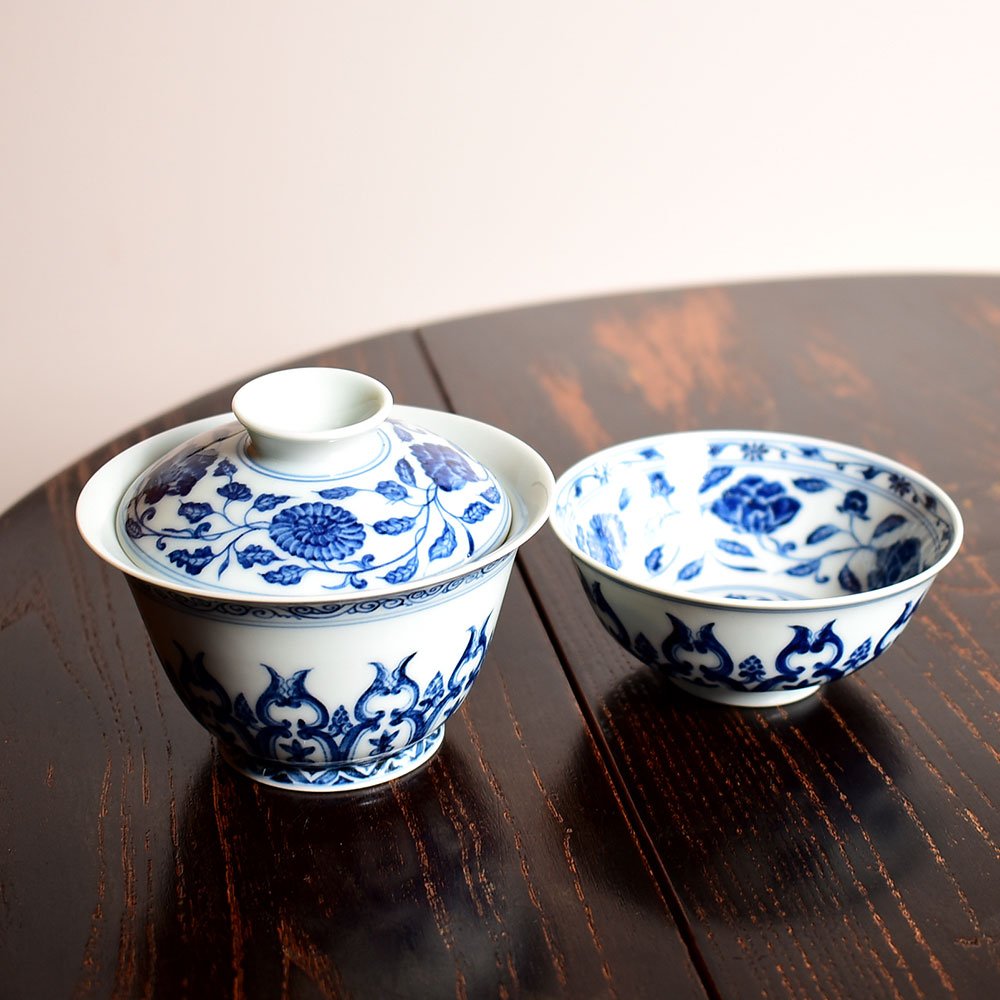
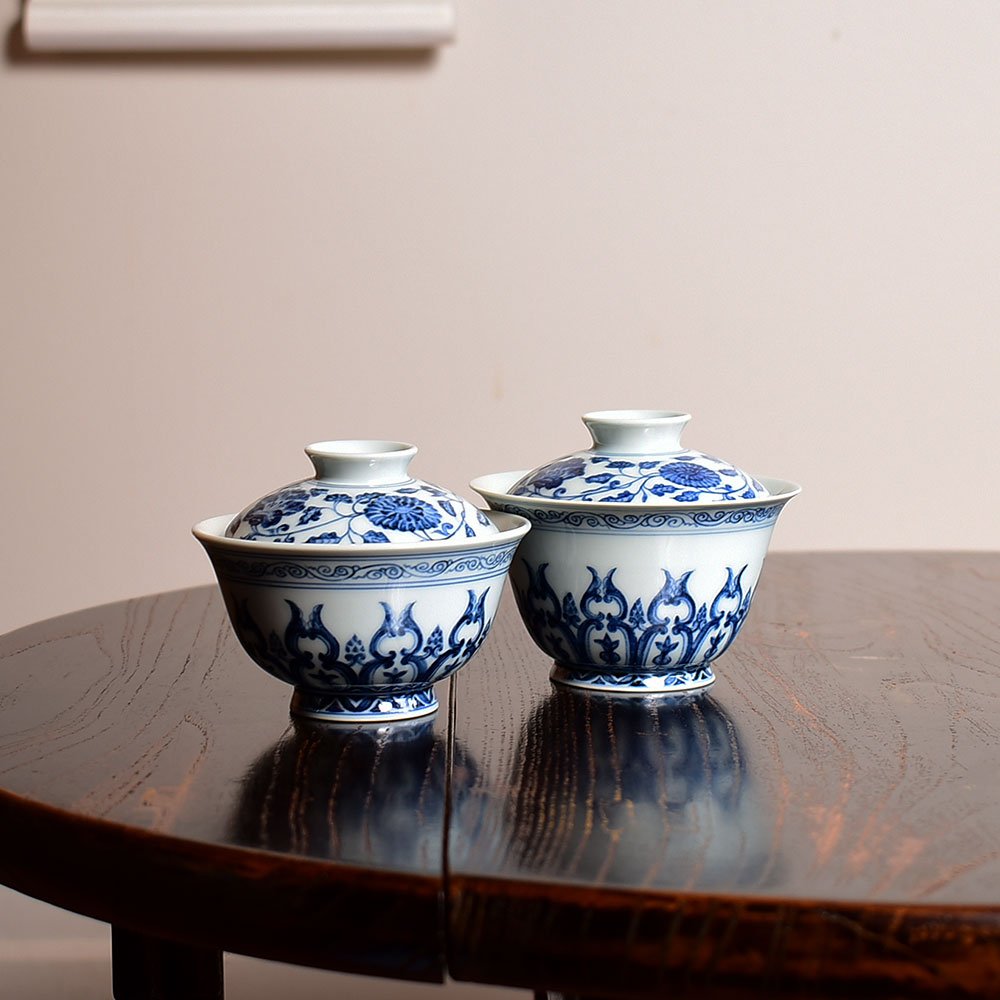
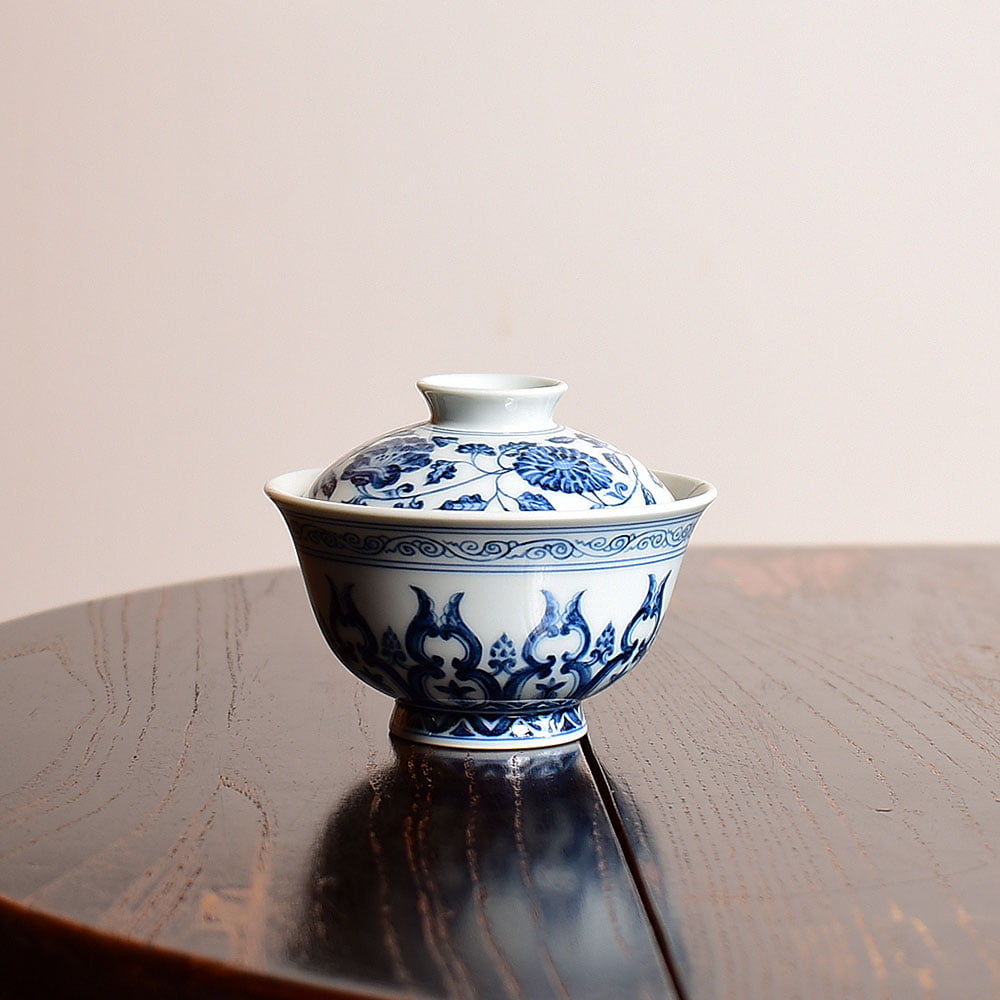
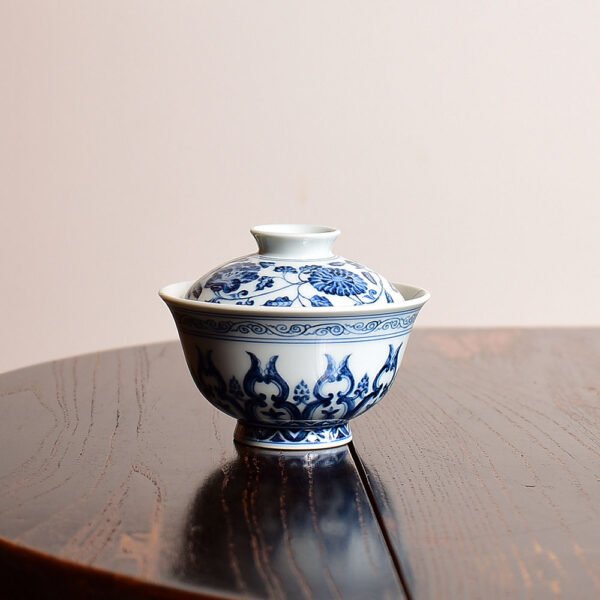
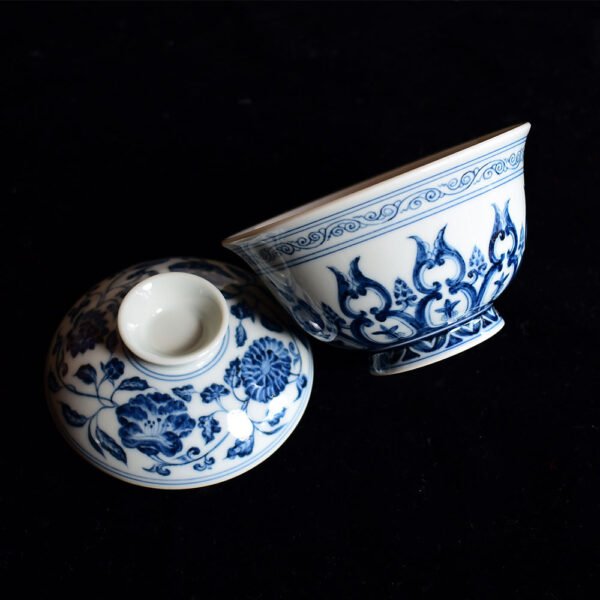
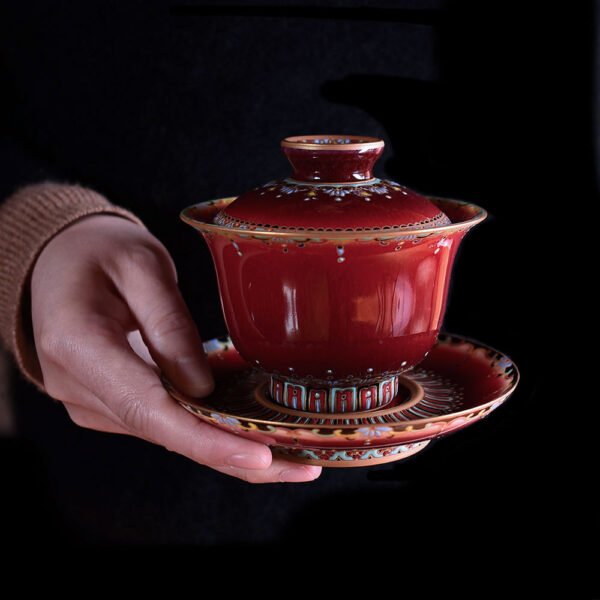
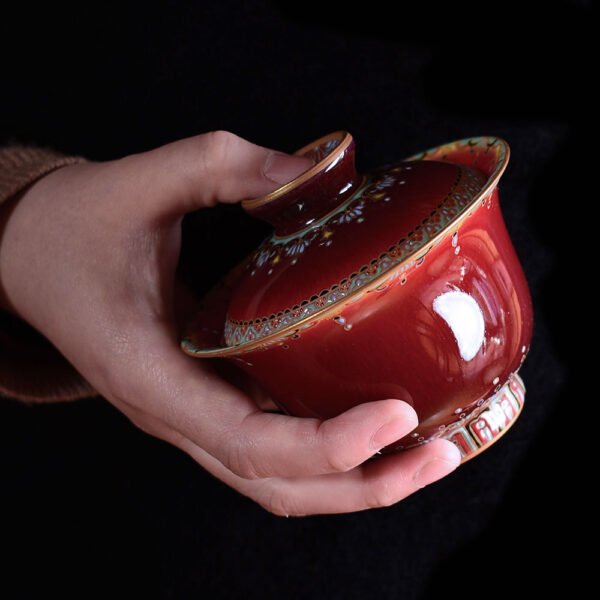
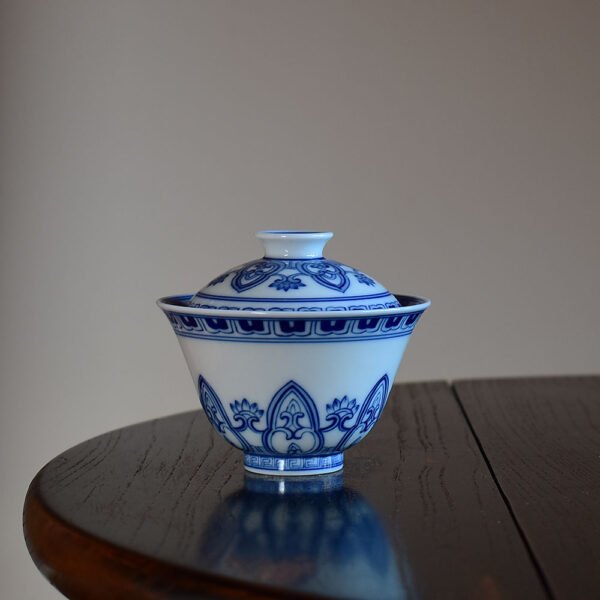
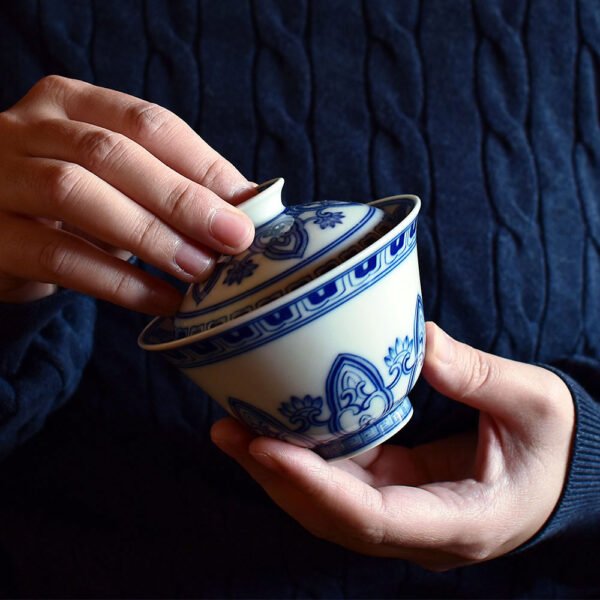
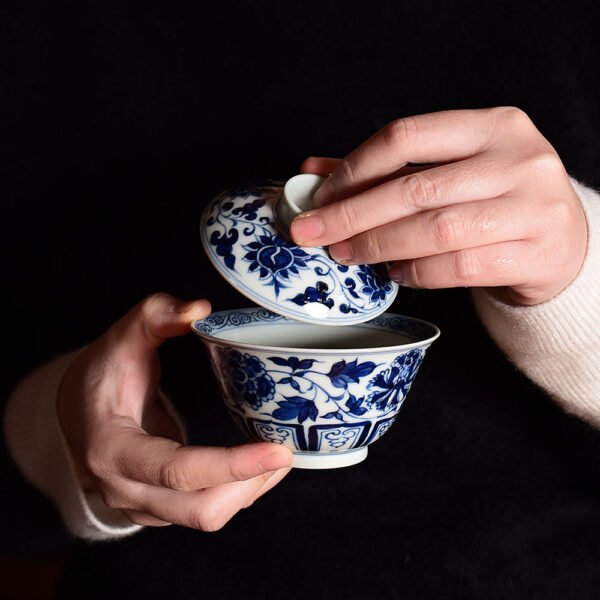
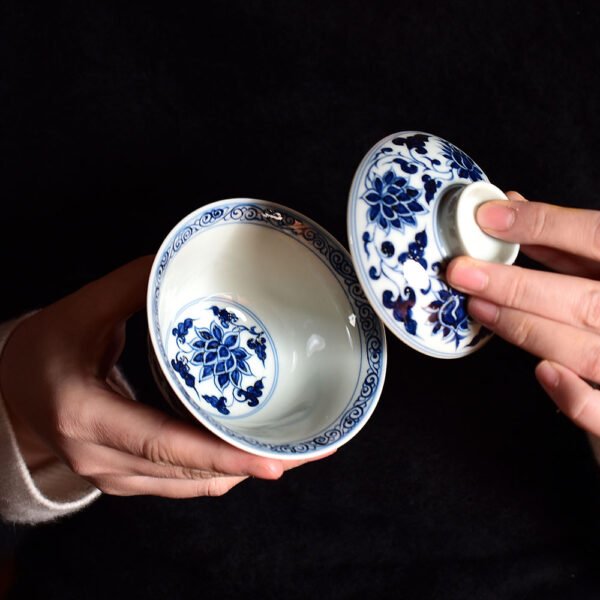
There are no reviews yet.